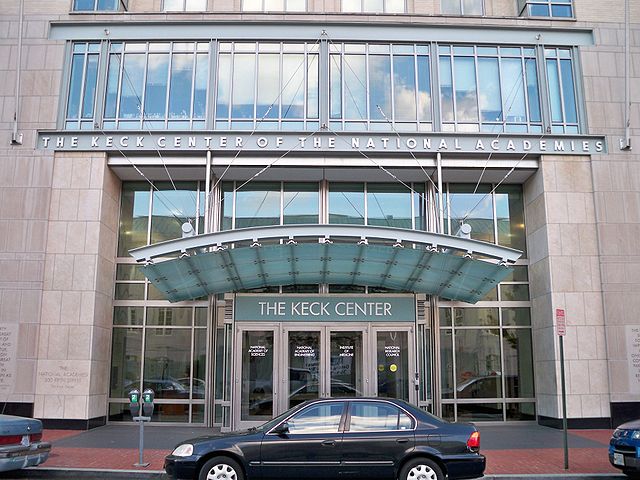January 31, 2020
Miles Pomper

The Keck Center, Source: ‘Matthew G. Bisanz, CC BY-SA 3.0, WikiMedia Commons
On January 31, 2020, Senior Fellow Miles Pomper delivered a presentation to the National Academies of Sciences’ conference on “Radioactive Sources: Applications and Alternative Technologies,” held in Washington, DC, at the Keck Center of the National Academies. The meeting was chaired by Ambassador Bonnie Jenkins, founder of Women of Color Advancing Peace and Security, and included presentations from experts at Sandia National Laboratories, the National Nuclear Security Administration, the Nuclear Regulatory Commission, the Food and Drug Administration, Nuclear Threat Initiative, Department of Homeland Security, and the Government Accounting Office.
High-Risk Sources
High-risk sources include Americium-241, Americium-241/Beryllium, Cesium-137, Cobalt-60, and Iridium-192. Though there are other radionuclides identified by the Nuclear Regulatory Commission to be “of principal concern” if used in a radiological dispersion device—oftentimes called “dirty bombs” in the media—these particular five radionuclides are in widespread commercial use around the world, and are of the highest risk for such weaponization.
In his presentation, Pomper discussed the series of workshops and studies conducted by CNS since 2008, including:
- Alternatives to High-Risk Radiological Sources: The Case of Cesium Chloride in Blood Irradiation (2014)
- Permanent Risk Reduction: A Roadmap for Replacing High-Risk Radioactive Sources and Materials (2015)
- Treatment Not Terror: Strategies to Enhance External Beam Cancer Therapy in Developing Countries While Permanently Reducing the Risk of Radiological Terrorism (2016)
- View the full list CNS Research in Radioactivity
He examined the varied and important uses for these high-risk materials—including medical, insect sterilization, oil and gas, and food industry uses—and discussed existing alternatives. He concluded with recommendations for encouraging more widespread use of these alternatives, including steps for the US government to take.
- Read the complete presentation: A Permanent Risk Reduction (PDF).
- Download the conference agenda.
